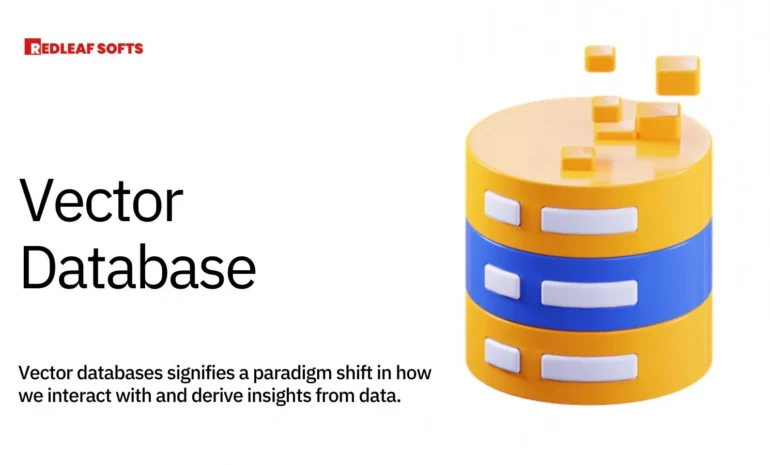The digital landscape is exploding with data. From social media interactions and financial transactions to scientific research and image recognition, the volume and complexity of data we generate are staggering. Traditional relational databases, while workhorses of the past, are struggling to keep pace with the evolving needs of modern data analysis. This is where vector databases emerge as a powerful alternative, offering a more efficient and scalable solution for navigating the labyrinth of information.
Understanding Vector Data and Embeddings
At the heart of vector databases lies a fundamental shift in how data is represented. Traditional relational databases store data in rows and columns, with each row representing a record and each column representing an attribute of that record. Vector databases, however, embrace a different approach. They store data as vectors, which are mathematical representations of data objects.
These vectors are essentially multi-dimensional arrays of numbers, where each dimension captures a specific feature or characteristic of the data object. Imagine a document represented as a vector. One dimension might represent the word frequency, another the sentiment analysis, and another the document length. The specific features and their corresponding dimensions vary depending on the application.
Crucially, these vectors are not created directly from the raw data. They are generated through a process called embedding. Embedding techniques, often powered by machine learning algorithms, analyze the raw data and extract its key features, translating them into numerical representations within the vector. This transformation allows vector databases to focus on the semantic relationships between data points, rather than the rigid structure of tables and columns.
The Advantages of Vector Databases
Vector databases offer a multitude of advantages over traditional relational databases, particularly when dealing with high-dimensional data and complex search queries:
Efficient Similarity Search:
One of the most compelling strengths of vector databases is their ability to perform fast and accurate similarity searches. By leveraging the mathematical properties of vectors, these databases can efficiently identify data points that are similar to a given query vector, even in high-dimensional spaces. This makes them ideal for applications like image recognition, recommendation systems, and natural language processing.
Scalability to Handle Massive Data Volumes:
Vector databases excel at handling massive datasets with high dimensionality. Their ability to represent data points compactly and efficiently translates to faster search speeds and improved scalability as data volumes grow.
Flexibility for Unstructured Data:
Traditional relational databases struggle with unstructured data like text, images, and videos. Vector databases, however, can effectively handle this type of data through embeddings, allowing for more comprehensive data analysis.
Real-Time Analytics:
The speed and efficiency of vector searches make vector databases well-suited for real-time analytics applications. This enables businesses to gain valuable insights from their data streams as they happen, informing critical decisions promptly.
Beyond the Hype: Practical Applications of Vector Databases
The applications of vector databases extend far beyond theoretical advantages. Here are a few compelling examples of how these powerful tools are revolutionizing various industries:
Recommendation Systems: E-commerce platforms and streaming services leverage vector databases to recommend products or content users might enjoy based on their past behavior and preferences. By analyzing user profiles and item embeddings, these databases identify similar items with high accuracy, leading to a more personalized user experience.
Image and Video Search: Social media platforms and image recognition systems rely heavily on vector databases to efficiently search for similar images or videos. By comparing query embeddings with image embeddings stored in the database, they can quickly retrieve relevant results for users.
Fraud Detection: Financial institutions utilize vector databases to identify fraudulent transactions in real-time. These databases analyze historical transaction data and user profiles, generating transaction embeddings that can be compared to identify anomalies and suspicious patterns.
Natural Language Processing (NLP): Vector databases play a crucial role in NLP applications like sentiment analysis and chatbots. By analyzing text embeddings and identifying semantic similarities, these databases can extract meaning and sentiment from textual data, powering a range of NLP tasks.
Scientific Research: Researchers in various fields, from bioinformatics to materials science, are increasingly using vector databases to analyze complex datasets and identify patterns in high-dimensional scientific data.
Considerations When Choosing a Vector Database
While vector databases offer undeniable advantages, choosing the right solution for your specific needs requires careful consideration. Here are some key factors to evaluate:
Scalability and Performance: Consider the expected growth of your data volume and the desired search speed. Ensure the chosen database can handle your current and future needs efficiently.
Query Capabilities: Evaluate the types of queries your application requires. Some vector databases excel at specific search functions, like nearest neighbor searches or semantic similarity searches.
Integration with Existing Infrastructure: Consider how the vector database will integrate with your existing data infrastructure and development tools.
Conclusion:
The rise of vector databases signifies a paradigm shift in how we interact with and derive insights from data. Their ability to handle complex, high-dimensional data with lightning-fast search speeds and efficient scalability makes them a game-changer for various industries.
Whether you’re tackling massive datasets for personalized recommendations or unlocking hidden patterns in scientific research, vector databases offer a powerful tool to navigate the ever-growing maze of information.
As technology continues to evolve and data volumes reach unprecedented heights, vector databases are poised to become an indispensable component of the data analysis landscape. Are you ready to embrace the future of data exploration? Consider the potential of vector databases and how they can empower you to unlock the hidden potential within your data.
We offer a range of services, including consulting, development, and integration support to help you implement this innovative technology and unlock the full potential of your data. Contact us today to discuss how vector databases can revolutionize your data analysis and propel your business forward.


